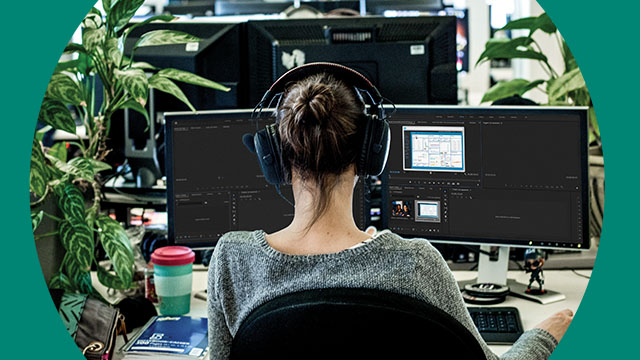
How to conduct and create engaging customer interview videos
In this age of the customer, testimonials rise above the collective noise to drive home your brand’s story in a crowded marketplace. A “first person” interview allows people to hear directly from the end user of your product or service. End users are potentially your best marketers since they speak as an outside source of information with no direct ties to your organization. They more objectively validate the quality of your product or service.
An engaging customer testimonial video can:
- Build brand enthusiasm.
- Inspire employees.
- Solidify strong customer relationships.
- Go viral on social media.
- Help generate new business.
Embrace the video-first market
Today, most people have a mobile device in their hand, or at least nearby, almost 24 hours a day. This means that video interviews are easy for people to consume, typically via social media. Check out these 2018 stats[1]:
- 54% of people want to see more video content from marketers.
- 83% of consumers worldwide prefer YouTube to watch video content.
- 73% of consumers worldwide prefer watching videos on social media.
Suffice it to say, if your customer testimonials are not in video form, there’s a good chance your intended audiences won’t consume them.
So how do you make this all-important marketing tool, the customer interview video?
Craft a quality interview
The goal is to capture an interview that feels as natural and authentic as possible. The best way to do this is to make the experience feel like a “normal” conversation to your interviewee.
First, don’t share your questions with the interviewee ahead of time, unless you have to for policy reasons. Giving your interviewee time to prepare ahead will result in rigid, scripted answers without a lot of personality. Also, when you meet with the interviewee in person for the first time, don’t discuss the questions. Talk about sports, hobbies, or other business to help them feel comfortable.
Next, go in with the mindset that the interviewee is the most interesting person in the world, and you are there to make them feel that way. Let them lead you on tangents, probe into their responses—especially if they lead you away from the original question list. The quickest way to lose an interviewee is to be disinterested in what they have to say in the name of “keeping to the script.”
Third, be sure to keep eye contact with your interviewee. When you look down or away, your interviewee will, too. In the final video, direct eye contact between the speaker and audience establishes engagement. Lose eye contact, and you’ll lose viewer interest.
Bonus tip #1: The question list
When it comes to preparing your question list, your intent should be to probe around the problem the customer solved by using your product or service. Let’s say they began using your product two months ago. The major “beats” will follow a traditional story arc and may look as follows:
- How did your company operate before our product?
- What problems were you having with your old system?
- Describe the process of implementing our product.
- What changes have you seen since using our product?
From there, you can add company-specific filler questions like, “When did your company begin looking into this solution?”
Edit your interview
When it comes time to edit the interview, your goal is to the convey the message in a condensed format without losing the emotion the interviewee brought to the interview.
First things first: time limit. The optimal video length is up to two to three minutes, so keep it short.
Second, be sure to follow the major story beats from the interview: beginning, middle, and end.
Third, make it organic. Avoid the temptation to remove all the interviewee’s “ahs” and “ums”—you don’t want them to sound like a robot! Allow a few, and it’ll sound authentic. Cut between interviewees if multiple people were filmed, using their different voices to complement each other’s answers.
Bonus tip #2: Music
Adding music will always implicitly drive the emotional element for a video. Think of music as a riverbank that guides a river—the interviews will cut and bend to the flow of the music. Use a music track to frame the piece, cutting between interviewees and subjects as the music changes beat or instrumental section.
Ready to start creating customer testimonial videos that can inspire new business, elevate your brand in the marketplace, and help close sales? Great! Now over to you: what are your best tips for creating and conducting customer interview videos?




